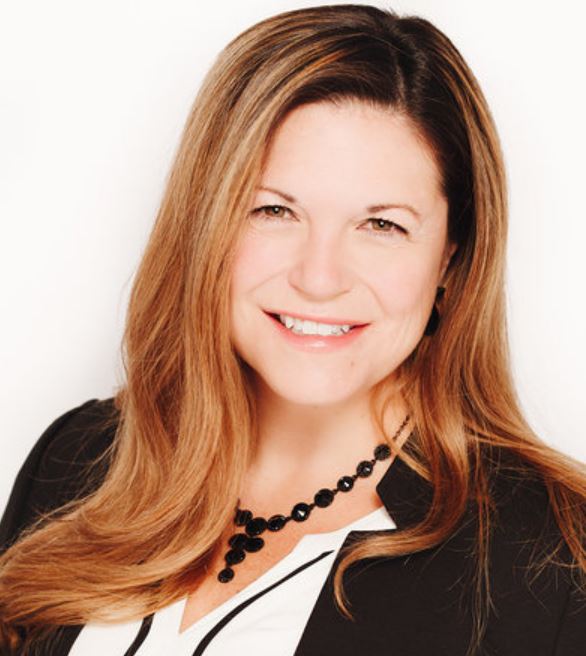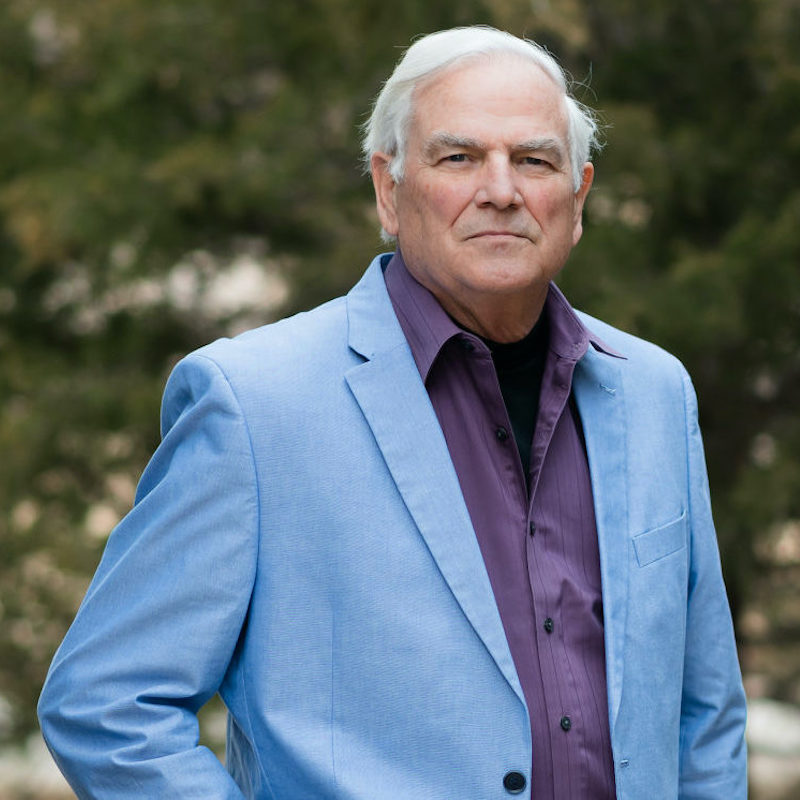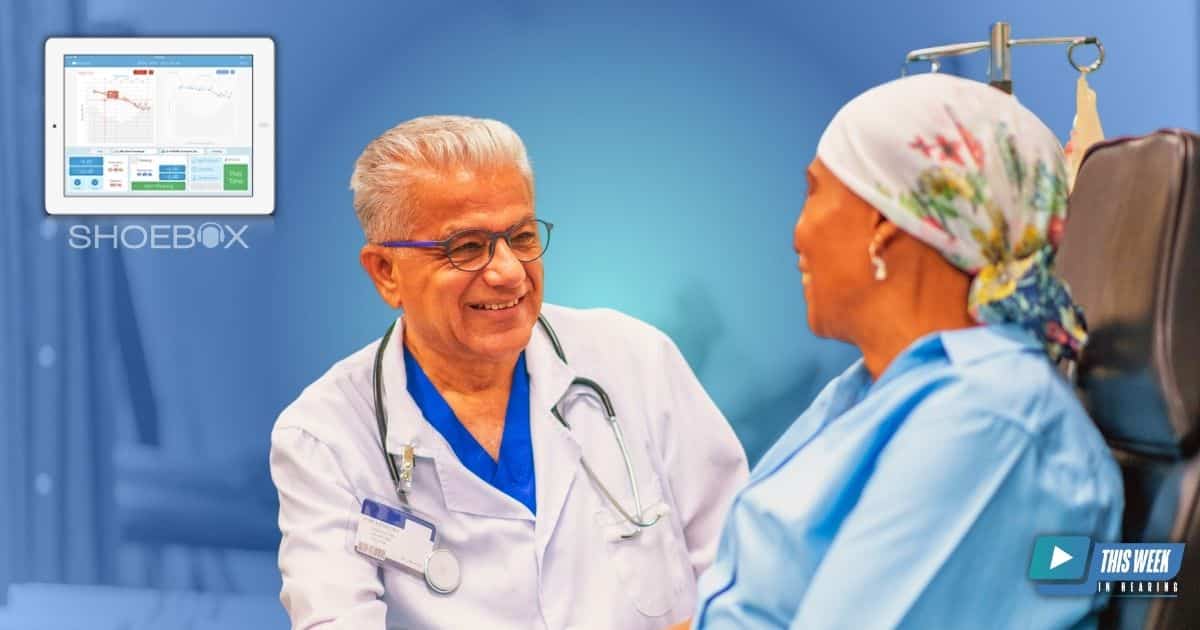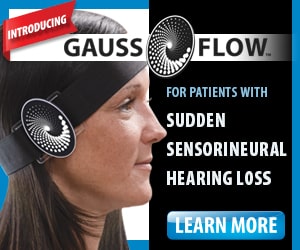Ototoxicity monitoring is a vital tool for preserving hearing in patients undergoing treatments with ototoxic medications, such as those used for cancer or tuberculosis. Bob Traynor and Renee Lefrancois from Shoebox Audiometry discuss the practical applications of this monitoring and how accessible tools are making it easier for clinicians to integrate into patient care. Renee explains the global implications of ototoxicity monitoring, especially in low-resource areas where access to audiological care is limited.
This episode explores the importance of collaboration between audiologists and oncologists to ensure patients’ hearing is monitored during treatment, despite logistical challenges. Looking ahead, Bob and Renee preview a follow-up episode where they will dive deeper into case studies and specific procedures for remote ototoxicity monitoring using automated audiometry.
The upcoming episode will explore how these tools are making a difference in various clinical settings.
Full Episode Transcript
Welcome to This Week in Hearing. Hello, I’m Bob Traynor, your host for this episode, which will be extremely interesting because we’re now talking about ototoxicity monitoring. This is an emerging component of audiologic practice across hospitals and practices in the United States. Today my special guest is Renee Lafrancois from Shoebox, who will orient us to ototoxicity and some of the procedural situations where we can monitor this interesting issue. Now, I should also say that we have a secondary episode that we will be doing for those of you who follow us routinely. And in this episode, we’ll talk about case studies and specific procedures and remote automated applications for ototoxicity monitoring. And now, Renee, I know that you have gone over your journey from the clinic to Shoebox with me in the past, but I know there’s a number of individuals out there who may not have an idea of your journey. So if you could take just a couple of minutes and talk about your journey from the clinic and working in Africa and Uganda and some other places, as well as then your transfer to doing research and development and developing procedures and so on for not only ototoxic medications, but audiometric assessment. Thanks so much, Bob. Thanks for having us and for this valuable time today. My name is Renee, as Bob mentioned, and I’m an audiologist practicing out of Ottawa, Ontario, Canada. I’ve been practicing for 25 years. The first 15 years of my life were focused on cochlear implantation. And in 2014, I started with a small startup here in my hometown known as Shoebox Audiometry. And I’m coming up on ten years with them in which I was able to touch upon and really delve into areas of advanced diagnostics and remote audiometry, including ototoxic monitoring, especially in lower resource areas that didn’t have access to clinicians or equipment. We know that ototoxic agents are often used in oncology or cancer treatments, but worldwide the landscape is a little different. Conditions such as tuberculosis, including drug resistant tuberculosis and malaria, often have agents that are highly ototoxic that by necessity are used in lower resource areas. And so that certainly gave a big platform for shoebox in the early days. To be beneficial on the worldwide scale. Okay, that’s great. Well, while we’re here, even though many of us have conducted ototoxicity monitoring, and many are very successful at that, can you give us a little bit of an idea of what really ototoxicity really is, as well as why it’s so important for us to monitor medical treatments for these issues? I’d be happy to. Thanks for that. Great segue. We know that the hair cells in the cochlea are amongst the most sensitive cells in the entire body. Ototoxic monitoring is important not only for optimal hearing preservation, but also to get an idea on how the agents that are being used to treat certain conditions are being accepted by the body as a whole. So we know I spent five years in a pediatric tertiary care center, and that is an area in which we saw exemplary ototoxic monitoring. Why? Well, because there was a highly skilled audiology department in the same, you know, location in the same building as the ototoxic specialists. And so there were open lines of communication and strategy planning in terms of, on a case by case basis. And so, however, when you. More adult oncology treatments and oncology centers now that are growing and are very, very specialized, they often don’t have audiology departments in the same vicinity as the oncology centers. And therefore, there is an additional challenge in order. These are patients that have many, many appointments, life threatening situations. Often hearing is not at the top of the list of concerns during this very tumultuous time. However, because treatments have become so much more effective over the last few decades, we’re now looking at expanded life expectancies, which is really great news for everybody afflicted with these conditions and working with these conditions. It also, however, though, puts hearing on the forefront, because now we’re not just looking at saving lives, we’re looking at improving and optimizing quality of life for the duration of life expectancy of that patient. Wow. Well now, why is the early detection of hearing loss critical for patients that are undergoing these ototoxicity treatments? I mean, a lot of us understand that who have been looking at ototoxicity for some time, but if you’re just getting into these areas, it may be new to some others, so you can help us with that particular discussion. It’s so exciting because there are things that can be done. And so, in terms of either changing the treatment agent, changing the administration, the types of administration, or even the frequency of administration can really have a significant impact on hearing preservation. And so as soon as, if you’re doing ototoxic monitoring, if you start to see changes. In hearing, you can act then and there, and therefore really try to optimize that hearing preservation. So what kind of actual consequence does ototoxicity have relative to the quality of life for the individuals that are involved? What kind of things actually happen during many of these treatments that we need to monitor to ensure good hearing? Well, you know, the last ten years has been really revolutionary in terms of learning about the impacts of hearing loss on quality of life over several decades. So, for example, we know that untreated hearing loss leads to increased levels of depression, anxiety, social isolation, hospitalizations overall social involvement as well as percentage of falls and potentially cognitive decline. So for a myriad of reasons, it’s really important to try and preserve the amount of hearing that we have. And, you know, another really fascinating and exciting discovery over the past decade or so has been that life expectancy in itself has grown exponentially. Now we know that, you know, reaching 100 years of age is not uncommon, and it will, will become more of a normative expectation because of the advances in healthcare and the healthy lifestyles that people are living. And so in the past, when we would have a patient who was treated for a life threatening cancer at the age of 70, the preservation of life was the utmost and by far the number one goal of treatment. However, now we are looking further ahead and we’re saying that is still the main goal of treatment. However, we have these subsequent challenges where we know if we can also conserve hearing as much as possible should that patient survive and survive for several decades, that their quality of life will be significantly better than if their hearing loss had progressed to a severe, to profound level. Great. Well, that’s often our goal when we’re working with these patients that are receiving these various treatments. So what are the challenges that audiologists would have as they begin their practice of working with this population? Really, it’s proximity and resource availability are the two main challenges. I’d like to highlight that there are some phenomenal researchers, including Dr. Gayla Poling and team, who have been presenting on some of the challenges between oncology treatment and audiology treatment. They gave an excellent 1 hour panel presentation at AAA last year in 2023, in which they polled a large number of oncologists and a large number of audiologists. And both groups feel that audiometric monitoring is very important when certain oncological agents are being used. However, each group felt that the other group should be the lead person or a champion in terms of managing that hearing testing, and that is really hard. We know that oncologists are exceptionally busy and they don’t have a lot of training in audiology or how to procure audiological equipment. And audiologists don’t have a lot of access to oncological patients because often they’re not even in the same areas because cancer treatments are growing now and they’re often their own entities. And you know, there it just is a lack of open pathways for communication and patients. I also want to mention that patients going through chemotherapy have many, many appointments. They’re weak they’re often, you know, unwell. And obviously the focus is going to be on life saving measures. And so to add something like a hearing test in on a, you know, biweekly basis or monthly basis is just one more appointment that makes it challenging for them to get to. So really we have this open space right now where we know and all the professionals agree that there is a huge need for audiometric monitoring. However, the way to do it is still in a bit of a gray zone, and we’re trying to think outside the box and use innovative products in order to try and meet that need. So now, this is a question that may come out of maybe left field, maybe right field hopefully it’s center field. But the idea is that what about the use of telehealth involved, or tele-audiology involved with the programs that you guys offer? Excellent question. What we found in working together with numerous organizations who have really helped us learn over the past ten years, I’d like to call out the union against tuberculosis and lung disease, and in particular, Doctor I.D. Rusen, who is a worldwide leader in the treatment of tuberculosis and drug resistant tuberculosis. He approached us in 2014 to say, we’re starting this clinical trial of a drug that could really help preserve hearing for thousands and thousands of individuals worldwide. I’d like to say that in the case of drug resistant tuberculosis, the presence of absence, or absence of hearing loss has an immense impact on that individual’s not only quality of life, but ability to provide to their community and provide for their families. Because there isn’t the availability of hearing aids or even audiologists or hearing instrument specialists in some of these countries, that preserving hearing could really be it would change someone’s life dramatically. And so the union brought us into a clinical trial in which there were over 20 countries represented and the lowest resource countries. So we’re talking India, Mongolia, China, Mexico where we know that tuberculosis is a disease of the poor, of areas that don’t have as many resources as we’re used to in higher resource areas. And so in learning, together with that and the telehealth question that you just asked me, was we found that the testing, because of technological issues and WiFi problems or availability, it was best to do the testing on site. However, the review and the decision making was done in a remote fashion with shoebox audiometry. Every system comes with a HIPAA compliant personalized portal that’s doubly encrypted. What would happen is the testing would happen. It would be uploaded to the portal. And the supervising audiologists were able to review these results almost in real time, very closely. Were talking about seconds in which they could log into the portal and say whether or not there was a clinical change in hearing so that the supervising physicians could make a decision whether or not to change treatment. And changing treatment not only in terms of the agent, but also the schedule of the administration of treatments can really have a big difference in terms of damage to the cochlea. So sounds like there’s kind of a system that’s being set up. Everything’s not totally organized the way we would all like to see it, but it is beginning to move forward with maybe some telehealth issues, telehealth possibilities with some capabilities. Now you mentioned something about the interactions between the oncologists and the audiologists, and each thought they should run the show, kind of which is not uncommon for our colleagues in audiology and certainly not uncommon for physicians. Are they beginning to meld together to some degree where they more work as a team rather than I want to run it and you can run it, and no, you don’t get to run that part and all this kind of stuff. And that’s why, you know, the panel presentation at AAA last year was so groundbreaking. The room was packed. I would estimate there were at least 400 people. People. And it was really riveting because we understand, I think both sides understand the challenges, and no one has an easy answer right now, but we’ll get there together. It’s great that the oncologists are recognizing that due to the expanded life expectancy, hearing has now increased in terms of prioritization. You know, life saving measures will always be the priority. But again, because of that expanded life expectancy, now we’re taking a look at that with a finer tooth comb, and more money and resources are being allotted to that. But really, I think the biggest challenge is that we’re dealing with very sick individuals, and we can’t expect those individuals to be able to be going to appointments twenty four seven at different areas. And so maybe there will come a day where these specialized oncology centers will have audiology departments or audiology teams, but right now, that’s not the case. And so, really, the audiologists don’t necessarily have access to the patients. The patients don’t have the energy needed for these additional appointments. But the oncologists, I think we’re at the beginning stages of a recognition that this has, you know, become more important over the last. Few decades, but how to get there and how to get these two sets of professionals to make it easy for the patient to have audiometric monitoring. Well, that’s where we’re at right now. Okay, so now, if we’re going to begin a program, how does this automated audiometry work and how does it compare to the traditional methods in terms of, say, effectiveness and practicality and some of those issues? Excellent question. I mean, what is the point of doing audio metric monitoring if it’s not valid? And so we at Shoebox were lucky in that we spent four years prior to being available on the market validating our modified Houston-Westlake technique in automated audiometry. We now have six independent validation studies on the automated platform. And so we were able to do that in populations that were. That we’re more healthy to be able to obtain that data, to make comparisons on sensitivity and specificity compared to hearing health professional run hearing tests. And we’re proud to say that of those validation studies, some of them are presenting with 100% specificity and 100% sensitivity, but all of them are over 90%, which is considered excellent. It’s also designed to be administered by a non hearing healthcare professional. That could mean you can actually administer a hearing test while someone is undergoing chemo. We know that sometimes they need to sit there for hours at a time while the titration is going into their bloodstream. Perfect availability to actually sit there and have an automated test that’s being administered by either someone on the ward, perhaps a nurse, or someone else on the medical team who doesn’t have specific training and hearing testing. But that’s okay, because your product is going to take care of you for that. So let me see if I understand this correctly, Renee. So if I’m a professional like a nurse or an ancillary professional in one of the clinics where these treatments are administered. So I would have a Shoebox audiometer with me that’s all programmed up for all these with all these particulars from studies that you guys have conducted over the years, I would hand that to the patient, give them some directions, and then put some headphones on correctly and then push a button and the assessment would be conducted. Is that correct? That is correct, Bob. Now, for some of our younger patients or more elderly patients or patients who are quite ill there’s also an assisted mode that’s available where the healthcare professional, whether it be a medical assistant or someone else on the team that can actually administer the test and actually ask for a finger raise. For example, if actually, because the test takes about eight to ten minutes, depending on the number of frequencies that you apply, a little shout out to Shoebox here is that we do have extended high frequencies. Available as well. And that’s, yes, thanks to a very large clinical trial that we were available that we were working together with for five years. And so that is something that the professionals can decide depending on the age population of the individuals that they’re monitoring. Wow. Now, I know that we are going to do some case studies and specific applications for the automated audiometric ototoxicity monitoring programs. Here in another session. Do you have some other things that we need to know before we get to that particular session? Well, I think most clinicians have had some training and perhaps some experience in ototoxic monitoring. We’ve talked about cancer treatments and we’ve also mentioned tuberculosis and malaria. I’d also like to give a plug for cystic fibrosis. And those individuals often throughout their treatments at a young age are exposed to ototoxic medications. But they, too, there’s been a very groundbreaking drug that was released onto the market in 2021. And it’s known as Trikafta. And Trikafta has changed the life expectancy of the average cystic fibrosis patient that in the nineties was 30 years of age, currently is 50 years of age. Now they’re telling these individuals, you can prepare for retirement. They’re now looking for a life expectancy or expecting life expectancies of 80s and above. I know I actually have a friend who is in this situation. She’s 45 years old and she’s been on this drug for two years. And they’re now telling her, it’s time to invest in your retirement fund. Words that she never thought she’d hear. Now, that said, those individuals in the past had been exposed in large part to ototoxic medication. So now that hearing monitoring is becoming much more of a priority because we want to set them up for success as much as possible for decades to come. Wow. Well, this has been an interesting discussion, Renee. And today my guest has been Renee Lafrancois from Shoebox discussing ototoxicity monitoring and not only for cancer patients, as we see most of the time here in North America, but also for malaria and tuberculosis and now even possibly cystic fibrosis. I hope that you will be with Renee and I in a few days here when we discuss some case studies and specific applications for the Shoebox products relative to this interesting and very innovative application. Thanks so much for being with us today, Renee, and I look forward to our next discussion at this week in hearing thanks very much, Bob.
Be sure to subscribe to the TWIH YouTube channel for the latest episodes each week, and follow This Week in Hearing on LinkedIn and on X (formerly Twitter).
Prefer to listen on the go? Tune into the TWIH Podcast on your favorite podcast streaming service, including Apple, Spotify, Google and more.
About the Panel
 Renée Lefrançois, M.Sc.(A), Reg. CASLPO, CAOHC PS/A Director of Audiology. She has been practicing audiology since 1999 and has been with SHOEBOX Ltd. since 2014. After 15 years of working with cochlear implants, she eagerly took on a new challenge of diving into diagnostics and hearing conservation for her current role as Director of Audiology. Renée leads both the internal Clinical Team at SHOEBOX, as well as the SBX External Audiology Network which provides state-licensed review and professional supervision services in the US and Canada. She lives in Ottawa, Canada and when not working, enjoys all things outdoors.
Renée Lefrançois, M.Sc.(A), Reg. CASLPO, CAOHC PS/A Director of Audiology. She has been practicing audiology since 1999 and has been with SHOEBOX Ltd. since 2014. After 15 years of working with cochlear implants, she eagerly took on a new challenge of diving into diagnostics and hearing conservation for her current role as Director of Audiology. Renée leads both the internal Clinical Team at SHOEBOX, as well as the SBX External Audiology Network which provides state-licensed review and professional supervision services in the US and Canada. She lives in Ottawa, Canada and when not working, enjoys all things outdoors.
 Robert M. Traynor, Ed.D., is a hearing industry consultant, trainer, professor, conference speaker, practice manager and author. He has decades of experience teaching courses and training clinicians within the field of audiology with specific emphasis in hearing and tinnitus rehabilitation. He serves as Adjunct Faculty in Audiology at the University of Florida, University of Northern Colorado, University of Colorado and The University of Arkansas for Medical Sciences.
Robert M. Traynor, Ed.D., is a hearing industry consultant, trainer, professor, conference speaker, practice manager and author. He has decades of experience teaching courses and training clinicians within the field of audiology with specific emphasis in hearing and tinnitus rehabilitation. He serves as Adjunct Faculty in Audiology at the University of Florida, University of Northern Colorado, University of Colorado and The University of Arkansas for Medical Sciences.







